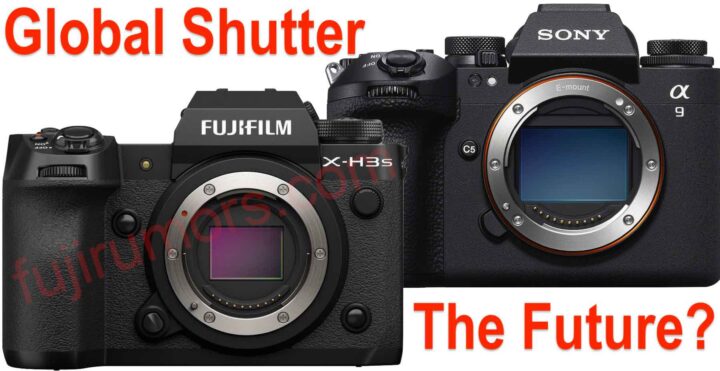Sony A9III: The Revival of Global Shutter and a Glimpse into the Fujifilm X-H3s?
The “Old” Global Shutter is Back
The Sony A9III has hit the market.
In the headline I wrote that this is the revival of the global shutter, simply because global shutter cameras are nothing new. In fact, cameras with older CCD sensors already featured a global shutter.
But as back in the days of CCD sensor cameras, the global shutter is not the answer to all problems, and as just everything in life it comes with its Pros and Cons. Let’s talk about it.
CMOS did beat global shutter CCD for a simple reason: it offered better image quality.
As we can see, the real challenge was not the development of the global shutter itself (it has been around for long), but to develop global shutter cameras with high image quality.
The Sony A9III is the first attempt in this regard.
And while I clearly applaud Sony for being again the first to feature innovative technology on its cameras (CMOS global shutter), it seems that the shortcomings of the global shutter are partially still there on the Sony A9III.
In short the “rule” is: the faster the sensor readout, the less the dynamic range.
The Sony A9III clearly has made huge steps forwards, but can’t fully escape this rule.
We can see it for example in its base ISO of 250, which, even if it was able to match the ISO250 performance of its predecessor the Sony A9II (which has still to be seen), it would mean it has the same dynamic range at ISO250 of the Fujifilm X-H2 (but for 3 times the price), as measured here.
Also, in order to allow for high frame rates, the Sony A9III has to stick with 24MP sensors. More megapixel would simply not be possible to process at that speed.
So, these are some of the limitations (dynamic range, high base ISO, difficulties to offer more megapixel).
But if you need up to 120fps bursts, if you miss synch speeds of up to 1/80,000, then the Sony A9III is the answer to your needs.
Personally, the 15fps mechanical shutter of my X-T5 (or X-H2) are already much more than I need. And 1/250 synch speed (and HSS beyond that) gets the needs of many covered too. And considering I already get more than I need for a fraction of the price of the Sony A9III, for now I am personally not interested in a global shutter camera.
But that’s just my humble needs. I am sure the Sony A9III will match the needs of others.
Fujifilm X-H3S – Global Shutter or Stacked Sensor?
I can hear you say: the global shutter would be a great fit for the speedy Fujifilm X-H3s.
Now, I have no rumors about it at all, but I know that Sony’s sensor division wants to make money, and that’s why we find all kind of Sony sensors in all sort of camera brands. So it is not unlikely if we speculate that, if request would be there, Sony would sell that sensor also to Fujifilm, Nikon, etc. Sony sensor division would be happy to make as much money as possible with that sensor.
And just as the stacked sensor X-H2S, Fujifilm would be able to offer a global shutter Fujifilm X-H3S for a significantly lower price.
But personally, if the Fujifilm X-H3S has to remain the king of speed in the Fuji lineup, I’d maybe prefer it to feature a modern but more affordable stacked sensor.
Again, it’s my preference. I am just not really one of those guys who needs 120fps or 1/80,000 synch speeds. If I am going to spend that amount of money, then I prefer to spend it for the best possible resolution and dynamic range, which is why I got the Fujifilm GFX100S (which at the moment costs much less than the Sony A9III).
But let me know what you think about it and feel free to vote the survey below.


